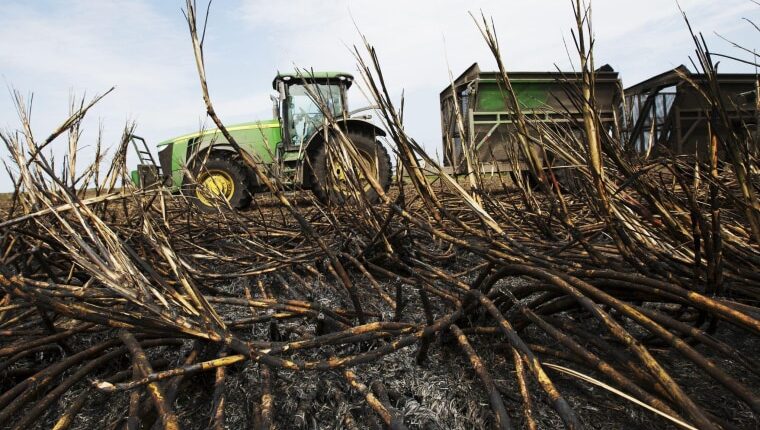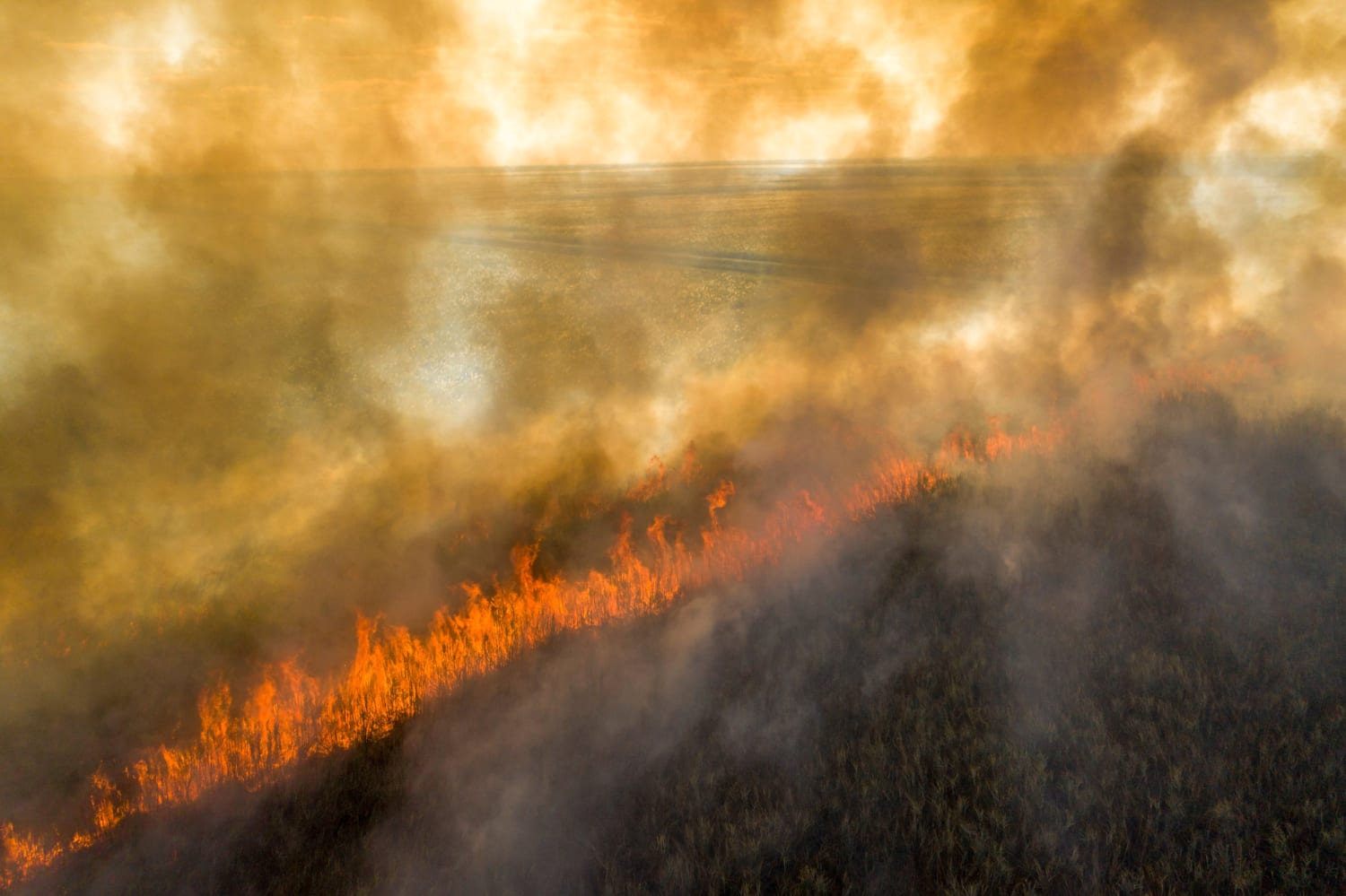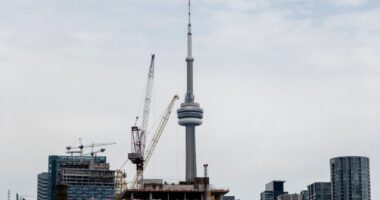The ash winds up everywhere — it’s in the laundry, on cars and blankets vegetation in backyard gardens.
Black snow, as the ash is known, flutters down, covering homes in parts of South Florida from October through May each year, as planned burns are carried out in thousands of acres of sugarcane fields to help the crops.
People who live around the south shore of Lake Okeechobee, an area that includes predominantly Black and Latino communities and many living in poverty, have complained for decades about the ash. While nearby sugar companies and farmers insist burnings are tightly regulated by the state, some residents say they stay in their homes with their windows shut in an effort to thwart respiratory illnesses.
Ahead of the current preharvest burn season, Florida State University researchers published a study in the journal Environmental Health Perspectives, stating that between one and six people die because of health complications brought on by the crop burns each year. The researchers also cite previous work showing that the burns are known to cause asthma, lung cancer and other respiratory illnesses. Members of Florida’s Stop the Burn movement say they hope the study, as well as joining forces with a similar campaign in Louisiana, will bring national attention to their longtime battle and push sugar companies and farmers to consider alternatives to burning.
Efforts to stop the practice of sugarcane burning
According to the Sierra Club, an environmental group that has organized the Stop the Burn campaign, Black and Latino residents in western Palm Beach County, who are “surrounded by over 75 percent of the total sugarcane acreage in Florida” are more likely to interact with the fallout of the burns.
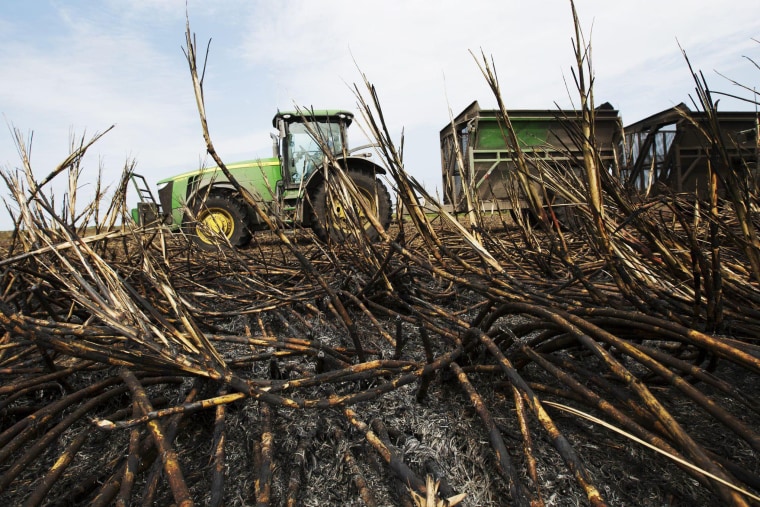
Kina Phillips, who joined the Stop the Burn campaign seven years ago, had been working as a patient outreach coordinator for a doctor when, she said, she noticed the impact the sugarcane burning was having on the community’s health.
“We had to put more people on breathing machines and write scripts for asthma medication during the burning,” she said. “We had to call ambulances when they could hardly breathe.”
A review of eight years of hospital data in 2021 by the investigative organization ProPublica and the Palm Beach Post newspaper, showed a spike in hospital and emergency room visits for residents of Belle Glade, the largest city in the burn area, during the burning season.
R.D. Williams, CEO of the Hendry Regional Medical Center in Clewiston, Florida, said his center’s records show little fluctuation for respiratory complaints month to month, except some “variability during flu season, which seems to line up well with harvest season.”
Influence of the sugar industry on the region
Farmers burn sugarcane to destroy unneeded leaves so it can be harvested more easily and efficiently. Sugar companies point out that the Florida Forest Service issues permits to farmers for burns and that burnings are carefully monitored by government regulations. The Florida Forest Service did not respond to questions.
Sugar farming is big business in South Florida, employing more than 14,000 people, generating about $800 million in revenues annually, according to Palm Beach County. Environmental activists say the power of “Big Sugar” makes some people hesitate to criticize the burnings.
“Some people say the sugar companies do a lot of good,” said Luz Torres, a member of the Stop the Burn Campaign who lives in Pahokee. “They are afraid the sugar company will close and they will lose their jobs. Some people tell me, ‘Luz, what’s the difference between what’s burning in the air and people smoking?’ I say, ‘I don’t choose to have ash falling on me and to breathe in smoke.’”
The two largest sugar companies in the state, U.S. Sugar. and Florida Crystals have repeatedly stated that they abide by state air quality measures.
U.S. Sugar did not respond to a request for comment. In a statement, Florida Crystals said the company “is committed to safe farming practices.” The prescribed burns, the company said, “are regulated and permitted on a daily, field-by-field basis by Florida Forest Service as part of the State of Florida’s nationally recognized regulatory program. Air-quality monitoring conducted by the Florida Department of Environmental Protection and by private air monitors consistently shows that our Glades farming region has some of the best air quality in the State of Florida — better than the state average, year after year.”
But there has long been disagreement over how air quality is measured.
Data availability around air quality hinders activists’ claims
Katherine Pruitt, national senior director of policy at the American Lung Association, said the organization does not “support agricultural burning; we believe it has negative health and air impact. But for a community fighting an industry like this, they need more data. It’s a challenge when it’s your story versus mine.”
The American Lung Association recently published its “State of the Air” report and gave Palm Beach County an “A” for air quality.
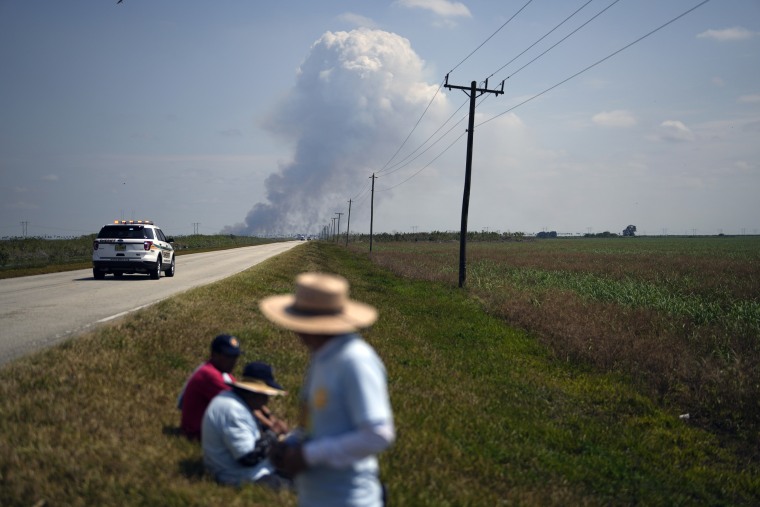
“We don’t collect air quality data ourselves,” Pruitt said. “We use EPA collected data. We rely on EPA state monitors. In Palm Beach, there are three monitors for the whole county.”
There are no monitors in Belle Glade, Pahoke and Clewiston in Hendry County, Palm Beach County’s western neighbor, she added. The EPA monitors do not pick up short-term spikes such as those caused by agriculture burning.
“We are not seeing an intensity of exposure in those communities because we cannot capture it if there is not a monitor there,” Pruitt said.
While the region passed the State of Air report, she said, “the annual particle pollution for Palm Beach County doesn’t look too great. It doesn’t violate clean air standards, but pollution is on the rise. We know burning things produces these deadly particles, but it can also come from tail pipes.”
Globally, prescribed burns are becoming obsolete
In 2015, the Sierra Club officially began its Stop the Burn Campaign, answering the call of residents in the burn region. Patrick Ferguson, Sierra Club senior organizing representative for Florida, has since visited Brazil, which stopped burning sugarcane fields and instead uses equipment that allows farmers to cut the cane. He said they hope to convince Florida’s sugar companies to do the same.
David Mitchell, CEO of CROPS Carbon International., was interviewed for this article from Ireland, where he is working with farmers to reduce their environmental impact.
“There is an opportunity for farmers to be heroes again,” he said. One method he points to is storing refuse from sugarcane deep in the ocean to aid marine ecology.
Mitchell says the cost of transporting the trash to the deep sea is nominal compared to the current path of burning or other alternatives that require expensive equipment.
On the sidelines watching anxiously are independent farmers who have contracts with sugar companies and who say their methods are highly regulated and do not cause harm.
Ardis Hammock has lived on her 105-year-old farm for 47 years. “I don’t remember a time when there hasn’t been an activist group that hasn’t been attacking us for some reason,” she said.
She owns the farm on the southwest shore of Lake Okeechobee with her husband.
“I have sugarcane fields 30 feet outside my house and I don’t have any health issues associated with the burn,” Hammock said. “I raised my two children in this house and they never had health issues from the burn. As a mom, I would never put my children in harm’s way I thought was caused by my lifestyle.”
Phillips, with the Stop the Burn campaign, said she is also concerned about what she might pass on to the children in her family.
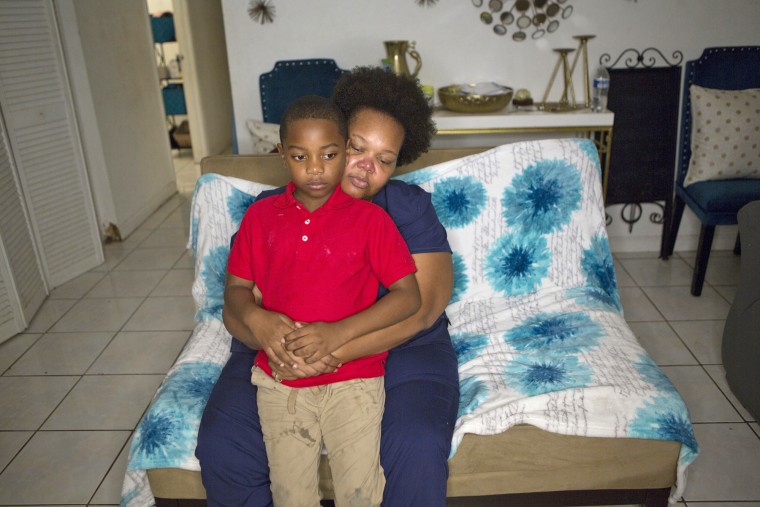
“My daughter had a son born during the time of burning,” she said. “He was a very healthy baby except we noticed when we took him out, he struggled to breathe.”
Though her grandson has become better, the family monitors his breathing because he deals with congestion during the burn season.
“I grew up here and there were things we were so used to and adapted to — they were not good,” Phillips said. “But it was normal for all my friends to have asthma, normal for people to have breakouts on their skin and when they went somewhere else, it cleared up. Everybody’s parents got disability checks because they had bad asthma. When we went on school field trips, they had inhalers for us. We didn’t put thought into what was causing it.”
She said she is standing up for her ancestors who couldn’t because they were afraid they would lose their sugar company jobs or because they did not have information from health studies.
“We can’t leave this on the shoulders of our kids. They will have another injustice they will have to fight.”
Source: | This article originally belongs to Nbcnews.com
